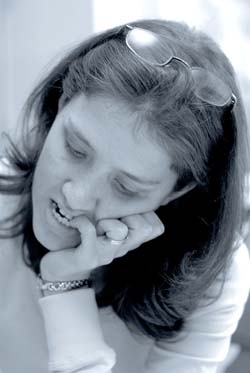Child's Play
Damian and Linda's Photography
Do You Think of Portraits in the Victorian Style?

Photography was invented in 1826 by a Frenchman, Nicéphore Niépce (although the credit sometimes goes to Louis Daguerre). His first exposure took 8 hours. Although the processes were improved by Daguerre, Fox Talbot, George Eastman and Frederick Scott Archer, they still took a long time to produce an image - exposures around a minute were not at all uncommon.
Asking anyone to keep still for that long would require a great deal of concentration and so it's hardly surprising that Victorian pictures were characterised by very rigid poses and a fairly stern overall feel - the participants would have been strictly admonished beforehand not to flinch lest it spoil the photograph.
Even with the invention of accurate lens-making machinery allowing significantly larger holes in the front of cameras to let the light in faster, photographs were still very slow affairs until the invention of magnesium flash powder. However, being in the room with a barely-contained explosion probably also did little to put subjects at their ease.
Fast forward to the 21st century and there is available a bewildering array of devices for capturing images at high speed - as short as 1/250th of a second is a very common duration for making an image, and four or five exceptionally detailed still images per second are possible. Some would argue even more is possible in the moving picture industry.
The art now is in holding back.
It's easy with digital and high speed film methods to take many, many images and there is a certain inevitability to producing great photographs if enough images are taken. If little thought is given to the photography, normally around 1 in 1,000 images might be great.
With skilful preparation of the environment and relaxed coaching, studio portraits can get a much higher success rate, typically 1 in 3 images are good and often 1 in 10 is really great. Everyone blinks once in a while and there's no need to be ashamed of it. The studio environment has the advantage that the images are visually striking - think bright white backgrounds for family photos and deep moody blacks for arty types.
It's good not to have too rigid a timetable in a studio and to give people time to relax. With children in particular, adult ideas of timetables are not always convenient and it is simply necessary to watch and wait with the camera on hand; sometimes photos need to be deliberately "wasted" to allow the subject to get used to the sight and sound of the studio lights. If the studio environment is not preferred then outdoor photography obeys the same rules - time to relax and manipulation of light & mood - for producing great photographs.
Artificial ruses to invent photographs ("Hold this comic thing, look surprised!") quickly pale. An understanding of the how and the why of being photographed - body language, composition and expression - is very helpful and it's perfectly fine to talk to people about this. With a few small hints, people can vastly improve their confidence and lose the "photo face" that so many of us pull.
All that remains is develop the skill to recognise and grab those moments of mirth and warmth that occur throughout any session. This just takes a lot of repetition and mindful presence - sometimes not easy with the barrier of the camera in place, although in my case it significantly eases my own social discomfort; when I have the camera, of course I have to be a bit of a clown because it's in the job description.
© 2006-2016 Damian Harty. Design by Andreas Viklund.